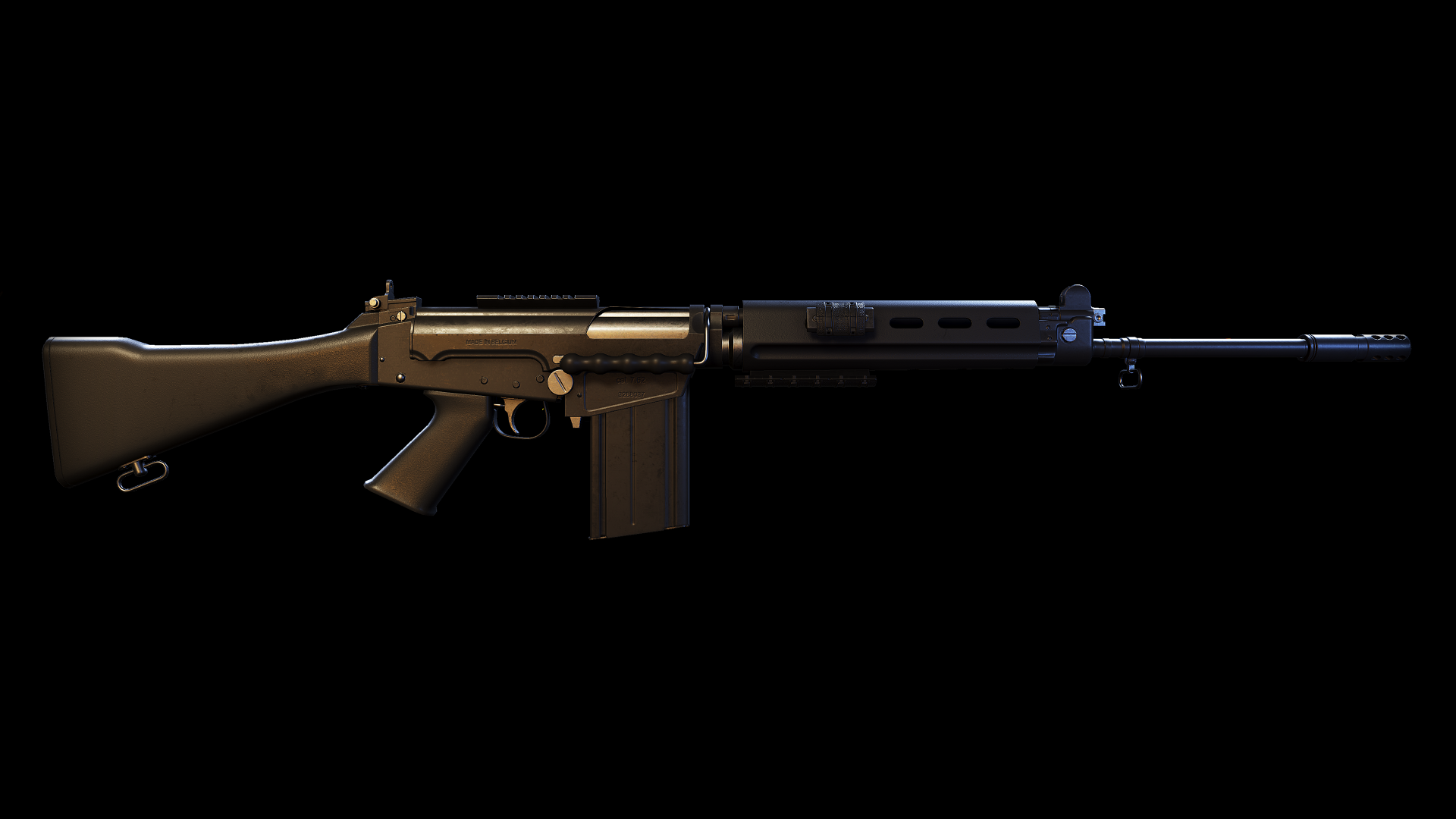

The adjustable gas system, placement of the gas cylinder above the barrel, and alignment of the stock with the barrel axis all reduce the tendency of the weapon to climb in rapid semi-auto fire. This is the fully-open position of the gas regulator and when a round is fired short recoil will result (the hold-open will fail to engage). (However, these numbers have been eliminated from the new LARS, apparently as a cost-saving device). On an older FAL, the number "7" on the sleeve will be in line with the axis of the rifle. Then unscrew the sleeve - with either the adjusting tool or the head of a cartridge - one complete turn so that the gas port is completely exposed. To adjust the regulator, with the gas-regulator sleeve fully screwed up over the gas port. This system helps to better manage the gas pressure, which helps in managing the recoil. Under ideal conditions the major portion of the gas is passed through the regulator and out into the air. It has an operator-adjustable gas regulator which works on the "exhaust" principle. The FAL is gas-operated and fires from the closed-bolt position in both the semi- and full-auto modes. Customarily, FN FALs are equipped with the long flash hider, which doubles as a rifle grenade launcher. Some of the FN FALs are restricted to semi-automatic fire only. It is fed from 20-round magazines (30 round magazines were also used in Hbar (heavy barrel) variants). There is usually a gas regulator to adjust the gas pressure, which aids in safely launching rifle grenades. The FN FAL rifle is a gas-operated, magazine-fed, select-fire rifle. In 1954, the British adopted a semi-automatic only version of the FAL, designated as the L1A1 Self Loading Rifle. insistence, the FAL was redesigned for this new ammunition, and the first rifles were produced in 1953, with the Canadians being the first to adopt it as their new service rifle in 1955.

insisted on using the full-power T65 cartridge instead of the. military was impressed by the FN FAL's performance however, the U.S. military trials, along with the British EM-2 bullpup rifle. In 1950, the FN FAL was submitted to U.S.

This was dropped in favor of the British. Initially, starting in 1946, the FAL was developed for the German 7.92×33mm Kurz intermediate cartridge as the Universal Carbine. The FN FAL was developed alongside the SAFN-49 self-loading rifle the two rifles operate very similarly.


 0 kommentar(er)
0 kommentar(er)
